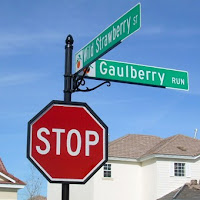What's a SMIDSY?
- Jan 29, 2013

High visibility safety vest made from 100% cotton, with a zipper closure on the front, a chest pocket, and two large lower pockets for tools. This safety vest meets all MUTCD standards. Comes in the color orange.
- 100% cotton
- Zipper front closure
- Chest pocket, two lower large pockets
- Meets MUTCD standards
SMIDSY happens to be an Australian term, that stands for, "Sorry Mate I Didn't See You". It's a term that motorcyclists and bicyclists use to refer to the crashes when a car doesn't see them, and apparently it's used far too often.
Recently released figures show it is time for vehicle drivers to stop blaming motorcyclists for car/bike accidents. The statistics show that nearly half of all motorcycling accidents were caused by vehicle drivers and three-quarters of them occurred at intersections. Motorcyclists refer to drivers failing to see them as SMIDSY.
SMIDSY - adj. Describes an accident caused by the driver of a car failing to see a cyclist or pedestrian. Also: Smidsy. [From the phrase, Sorry, mate, I didn't see you.]
Simon Best, IAM chief executive, said: "SMIDSY moments are happening far too often, and very few people are prepared to take responsibility for their part in them. It's always someone else's fault. All road users need to be more aware of who they are sharing the road with, and the risks they present. —Chris Knapman, "Drivers reminded to look out for vulnerable road users," The Telegraph, April 17, 2012
Wiggo's status as national treasure means this particular SMIDSY event gets widely reported. SMIDSY is the excuse inattentive motorists give to the cyclists and motorcyclists they skim or hit: "Sorry mate I didn't see you." —Carlton Reid, "Bradley Wiggins is hit by a car, then the cyclist haters pile in," The Guardian, November 8, 2012
Choose Hi Vis Supply for all fo your hivis safety vest and high vis gear.






 These diamond shaped signs are available each in 36" x 36" or 48" x 48" in three fabrics:
These diamond shaped signs are available each in 36" x 36" or 48" x 48" in three fabrics:
 It outlines temporary traffic control measures for lane closures and shifts, detours, shoulder work, median crossovers, mobile operations, and blasting. The MUTCD also addresses topics such as training, personal protective equipment (PPE), speed reduction, barriers, and lighting, as they apply to highway construction. It also provides for uniform design and setup of highway work zones, and includes guidance for the development of temporary traffic control plans (TCPs) that determine the flow of traffic through work zones.
It outlines temporary traffic control measures for lane closures and shifts, detours, shoulder work, median crossovers, mobile operations, and blasting. The MUTCD also addresses topics such as training, personal protective equipment (PPE), speed reduction, barriers, and lighting, as they apply to highway construction. It also provides for uniform design and setup of highway work zones, and includes guidance for the development of temporary traffic control plans (TCPs) that determine the flow of traffic through work zones.







